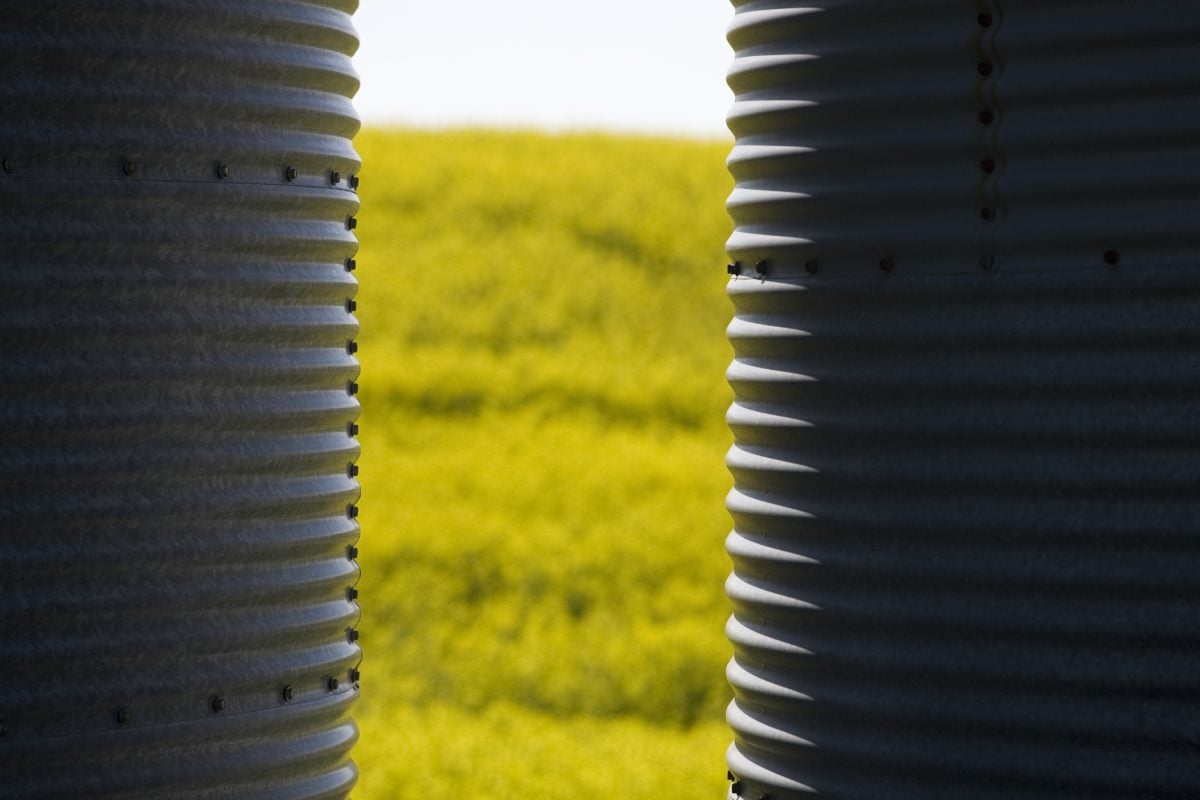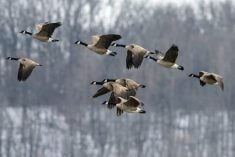LUNDAR, Man. — Clutching a handful of winter wheat stalks, Ray Bittner pointed to a field of winter triticale three meters away to make a point. At 1.2 metres high, the triticale was about 40 centimetres taller than the winter wheat in his hand. Which, he said, explains why it’s a superior crop for silage.
“This is a typical winter wheat height compared to the triticale,” said Bittner, a Manitoba Agriculture farm production adviser, who spoke during the Manitoba Provincial Pasture Tour, held Aug. 8 in the eastern Interlake.
“Tonnage is going to be higher on the triticale (for silage) than any of the winter wheat varieties.”
Read Also

Canada agriculture minister says canola trade prospects are improving after China visit
Canada’s agriculture minister Heath MacDonald said in an interview on Monday his weeklong trip to China is evidence of bilateral relations beginning to thaw, something desperately needed by Canada’s farmers and canola exporters.
Thanks to the amount of forage it produces and other factors, winter triticale has established a small foothold in Manitoba over the last two years. Doug Wilcox, Manitoba Agricultural Services Corporation manager of program development for insurance, said winter triticale acreage in Manitoba reached 6,500 in 2012 and 2013, up from 3,000 acres in 2010 and 2011. Before that, winter triticale was almost non-existent in Manitoba.
For now, triticale is not an insurable crop in the province, but the winter cereal is gaining traction with cattle producers like Lyle Thorgilsson, who farms just south of Lundar.
“I knew Ray (Bittner) had grew it a few times and I was looking for a crop I could seed in the fall,” said Thorgillson, whose winter triticale crop was a stop on this year’s pasture tour. “Springtime is a terrible time of year for a beef producer. You’re running in circles, trying to feed, calve cows and keep the calves alive…. The last thing you want to do is be heading out to the field.”
Thorgilsson and other Interlake farmers planted winter triticale for the first time last fall. In July
Thorgilsson chopped 40 of his 80 acre field into silage. It yielded nearly seven tons per acre.
“I have done oats and barley that did that (for tonnage), but not in the last three or four years,” he said, standing a metre from his remaining 40 acres. “So far, so good. I’m very pleased with it.”
Bittner has promoted winter triticale for the last few years because it’s a good feed alternative to barley and is better suited for silage than other winter cereals.
“We get a lot of questions: why would I use triticale instead of winter wheat or rye?” Bittner said.
Rye grows tall and produces a similar amount of silage to triticale, but its palatability is relatively poor. As for winter wheat, Bittner said a grower could probably make more money selling the grain. Therefore, triticale offers the optimum combination of feed, silage and overall economics for beef producers.
“It’s a hybrid crop, big heads and lots of grain yield. It’s a really good fit for silage or green feed,” said Tim Clarke, Manitoba Agriculture range and pasture specialist in Ashern, Man.
Like anything new or novel, Thorgilsson said his 80 acres of triticale has attracted attention.
“People have been driving by this crop all summer…. It looks pretty impressive in the spring, when everybody else is seeding and this is a foot high.”
Looking at Thorgilsson’s triticale field, Bittner estimated it would yield 60 to 70 bushels per acre. Thorgilsson said he probably would sell the grain to seed dealers because there is high demand right now.
“I have so many guys asking me for seed, I think it will turn out to be a very profitable crop.”
Bittner noted that cattle ranchers in the southern U.S. plant winter triticale for grazing.
“If you get a good quality sample, no sprouting, good colour and good plumpness, it will go for seed at a better price than what you’d get for feed,” he said.
“A lot of the triticale seed gets exported to Texas, Oklahoma and Kansas for winter grazing.”
The crop isn’t in the bin just yet, but Thorgilsson said planting winter triticale could become a common practice on his farm.
“The one year doesn’t tell the story on whether this will be a crop with a future around here…. But for me, hopefully, I’m going to put another 100 acres in (next year).”
Manitoba Trial: Winter Triticale
Lyle Thorgilsson, a beef producer from Lundar, Man., seeded winter triticale for the first time last fall. He adhered to the following agronomics:
Planted Fridge winter triticale September 5 and 6
- Seeded two bushels per acre at a cost of $12.00 per bu.
- Applied 20 lbs/acre of phosphorus and 25 lbs of nitrogen, with seed in furrow
- Broadcast 46 lbs./acre of nitrogen in May
- Applied Inifinity herbicide in June
- Harvested 40 acres of silage July 9 and 10. Silage yielded 6.8 tons per acre
- Plans to harvest remaining 40 acres in mid August for seed
(Source: Manitoba Agriculture)















